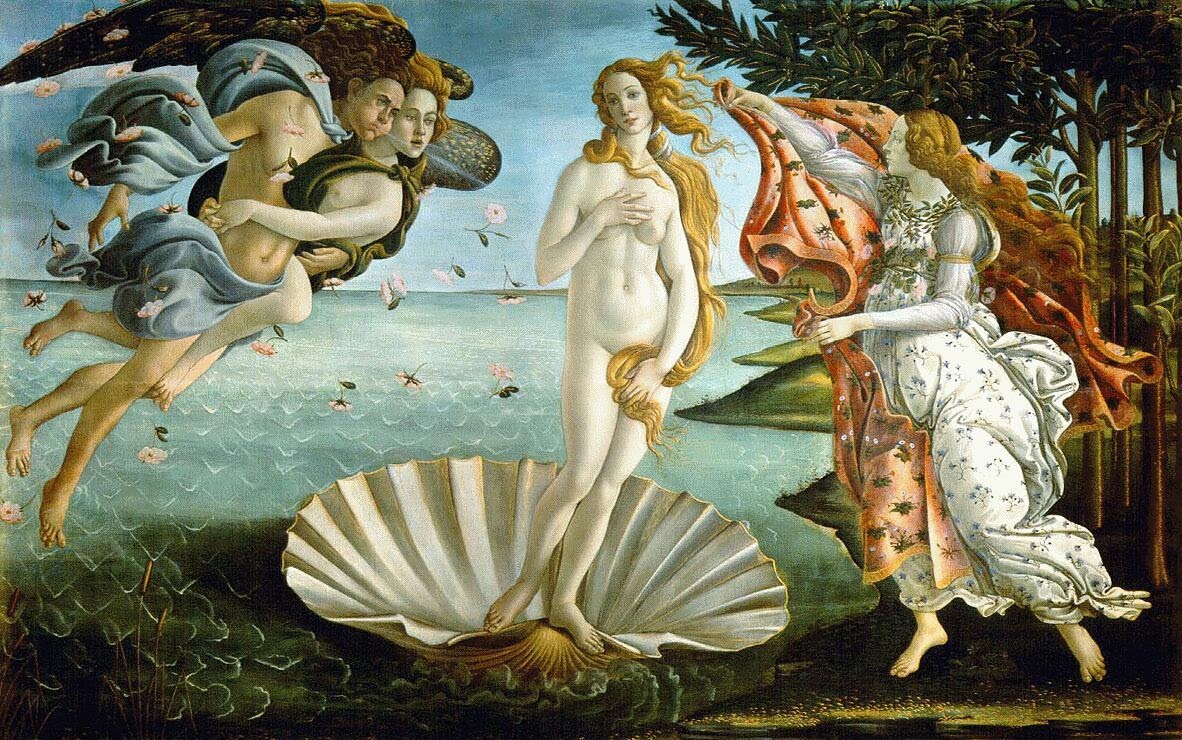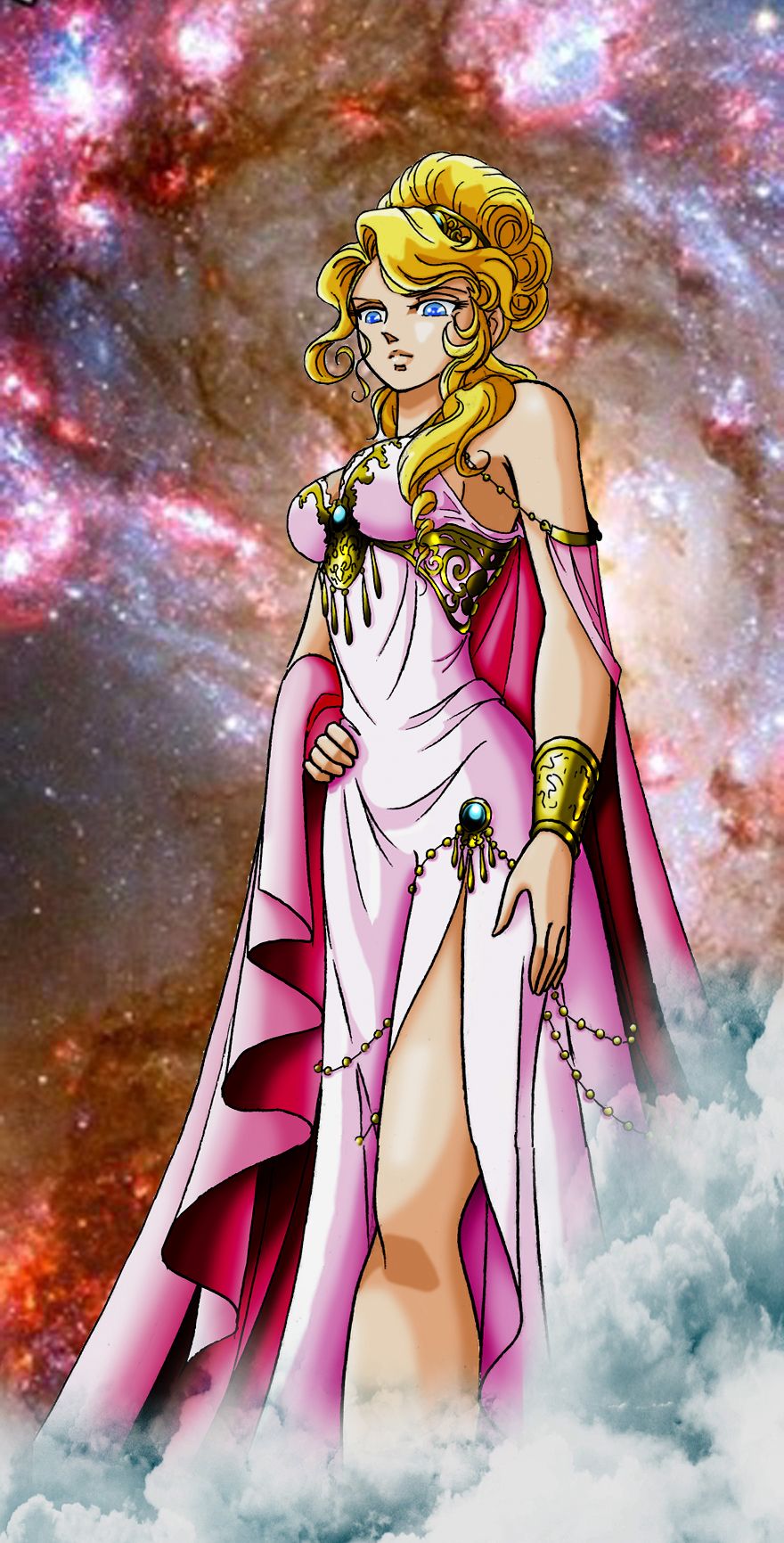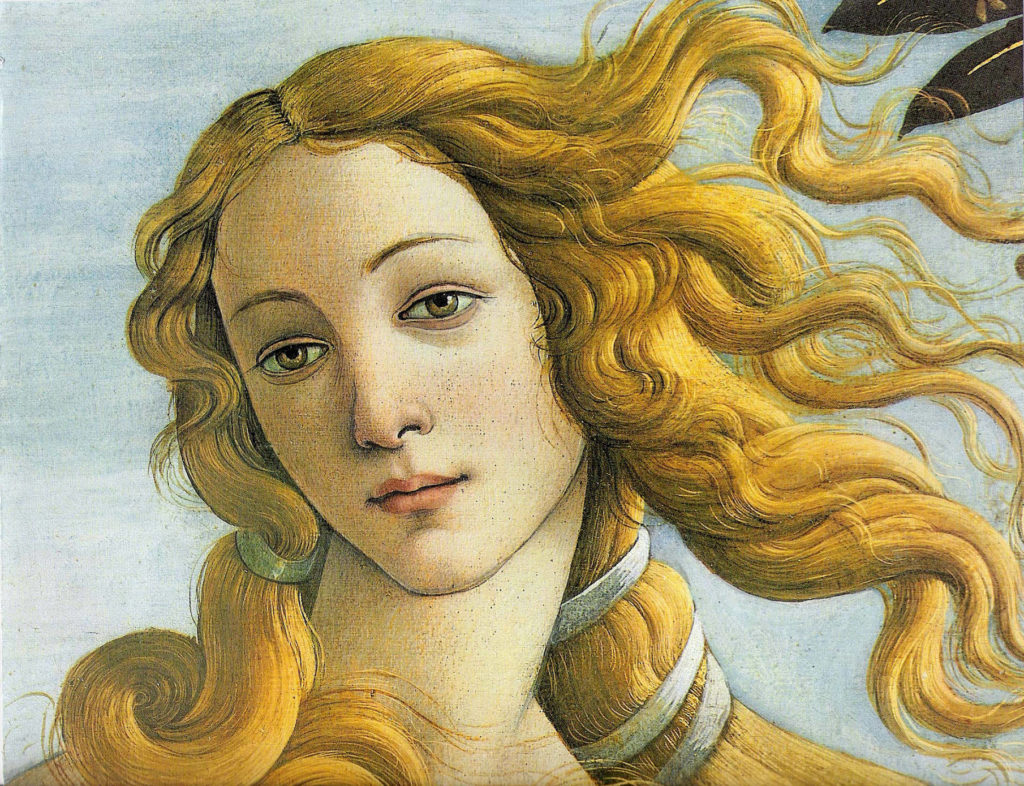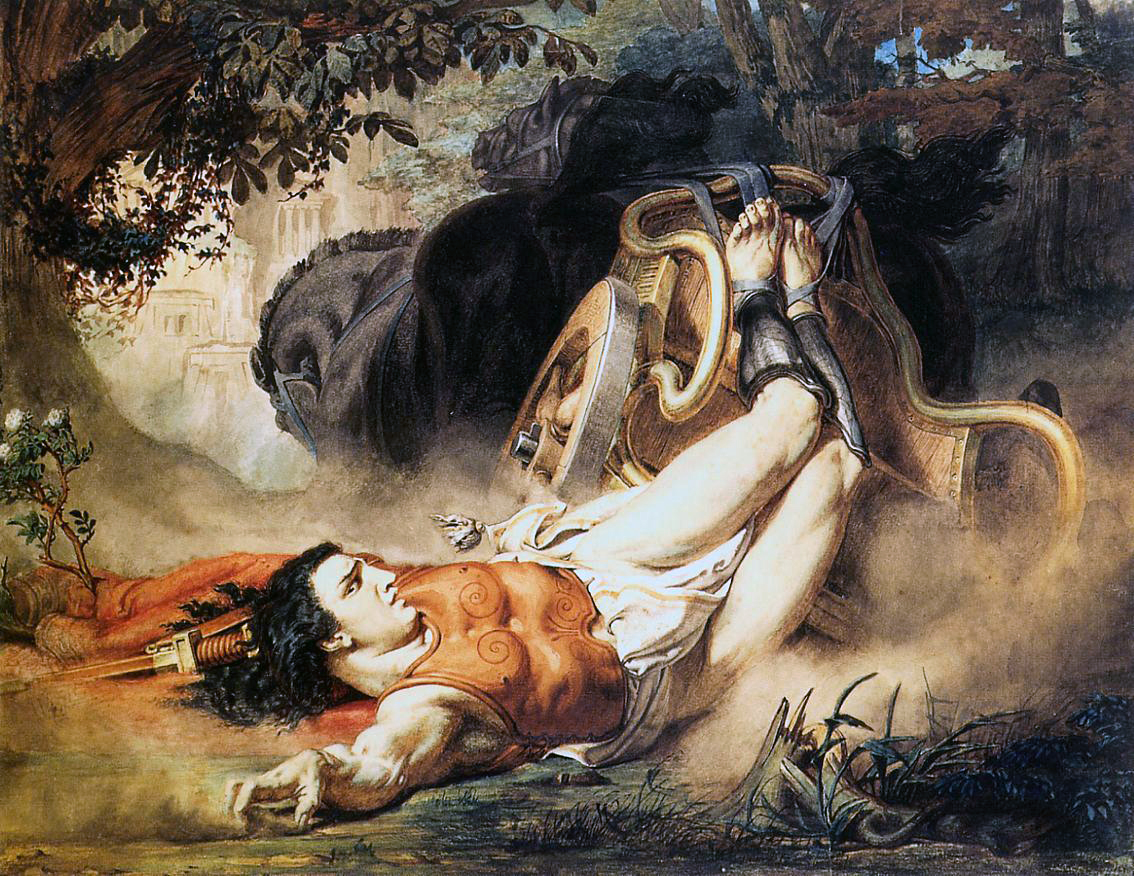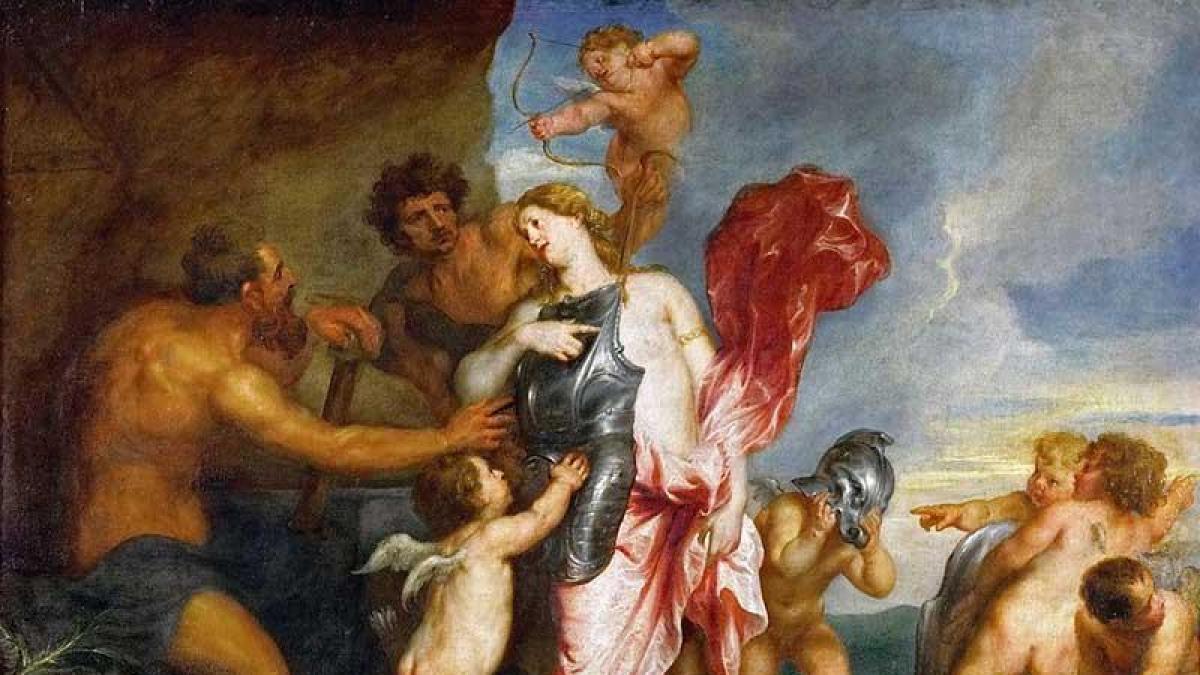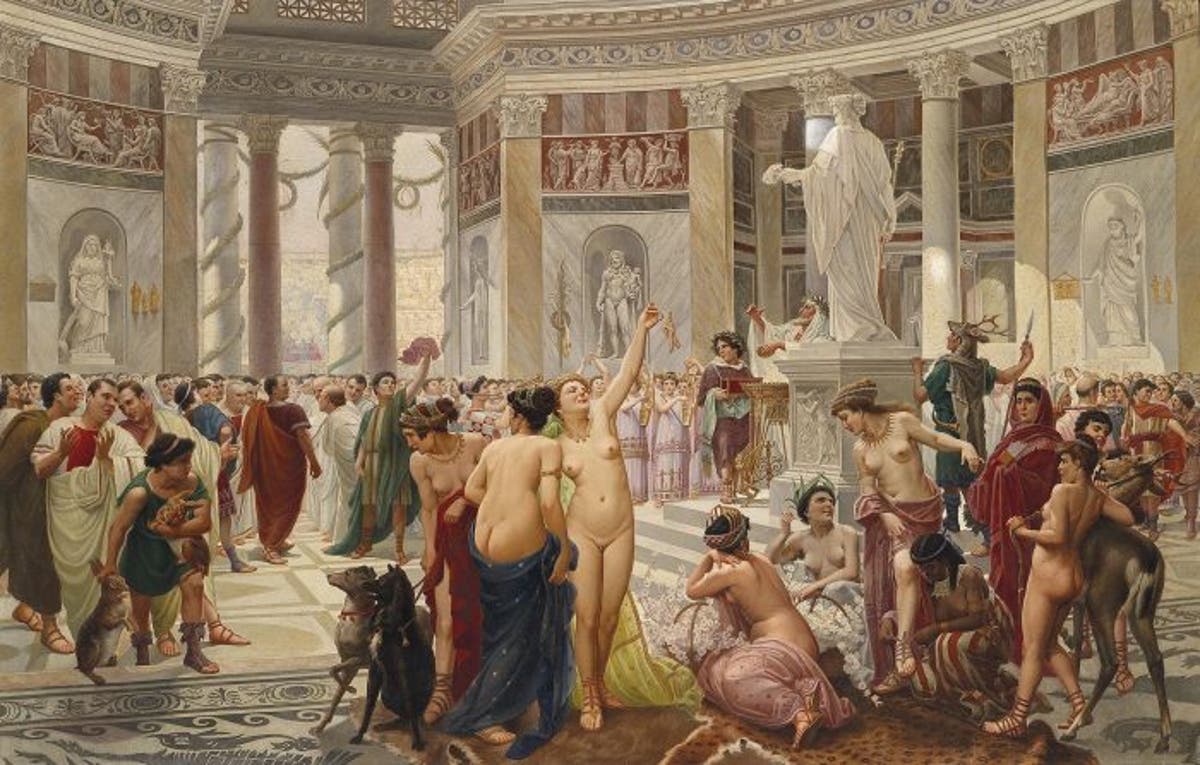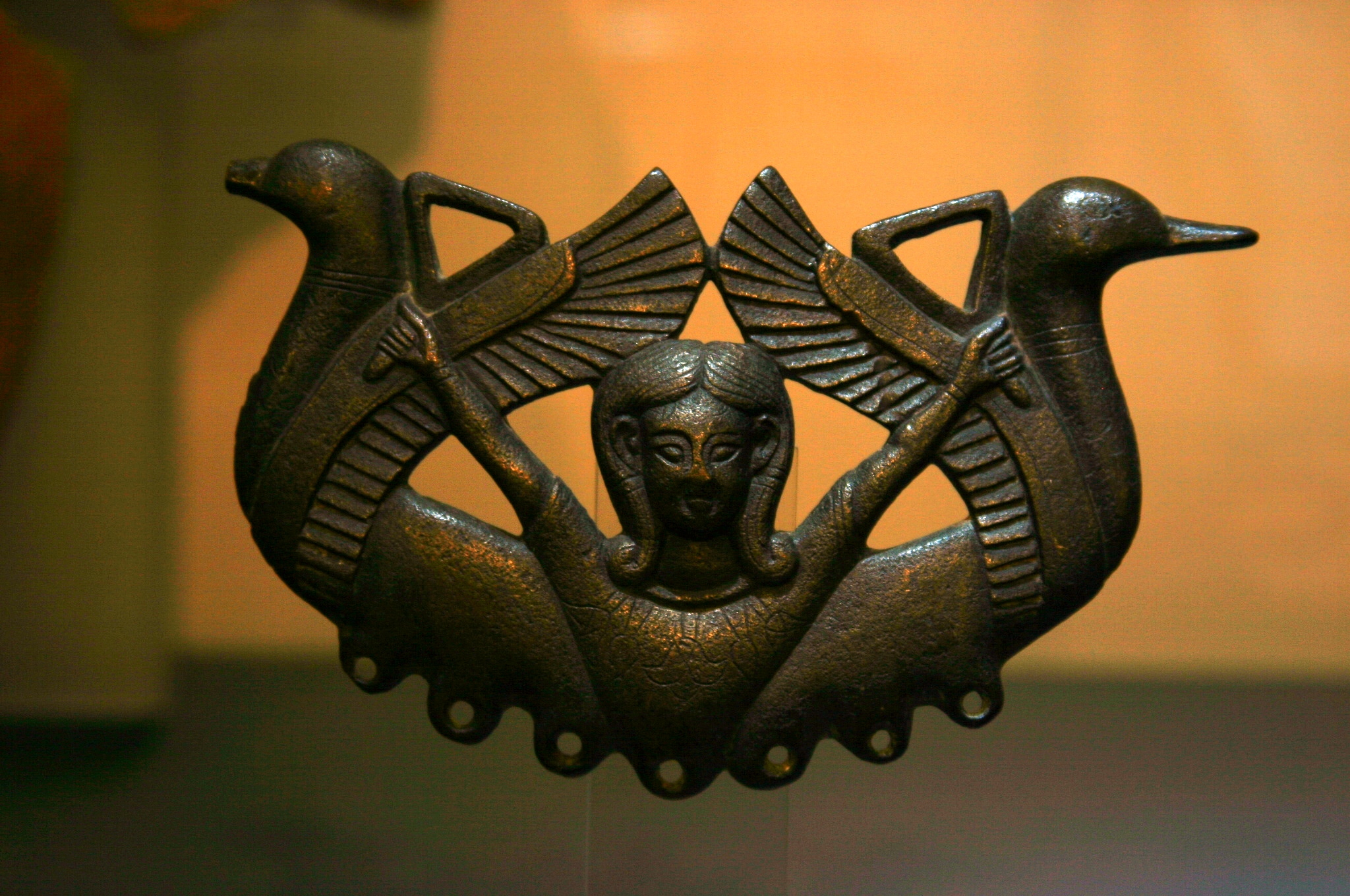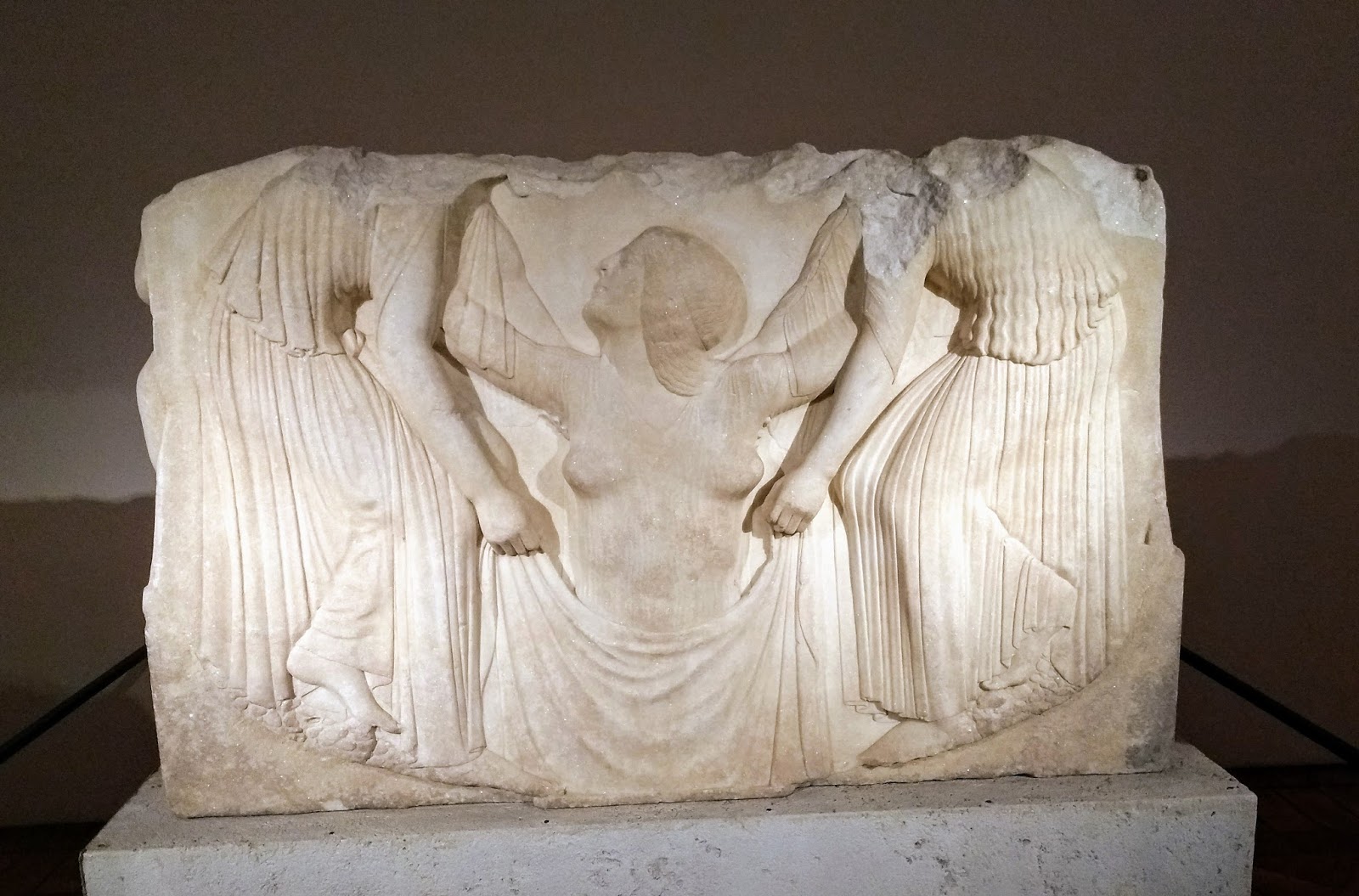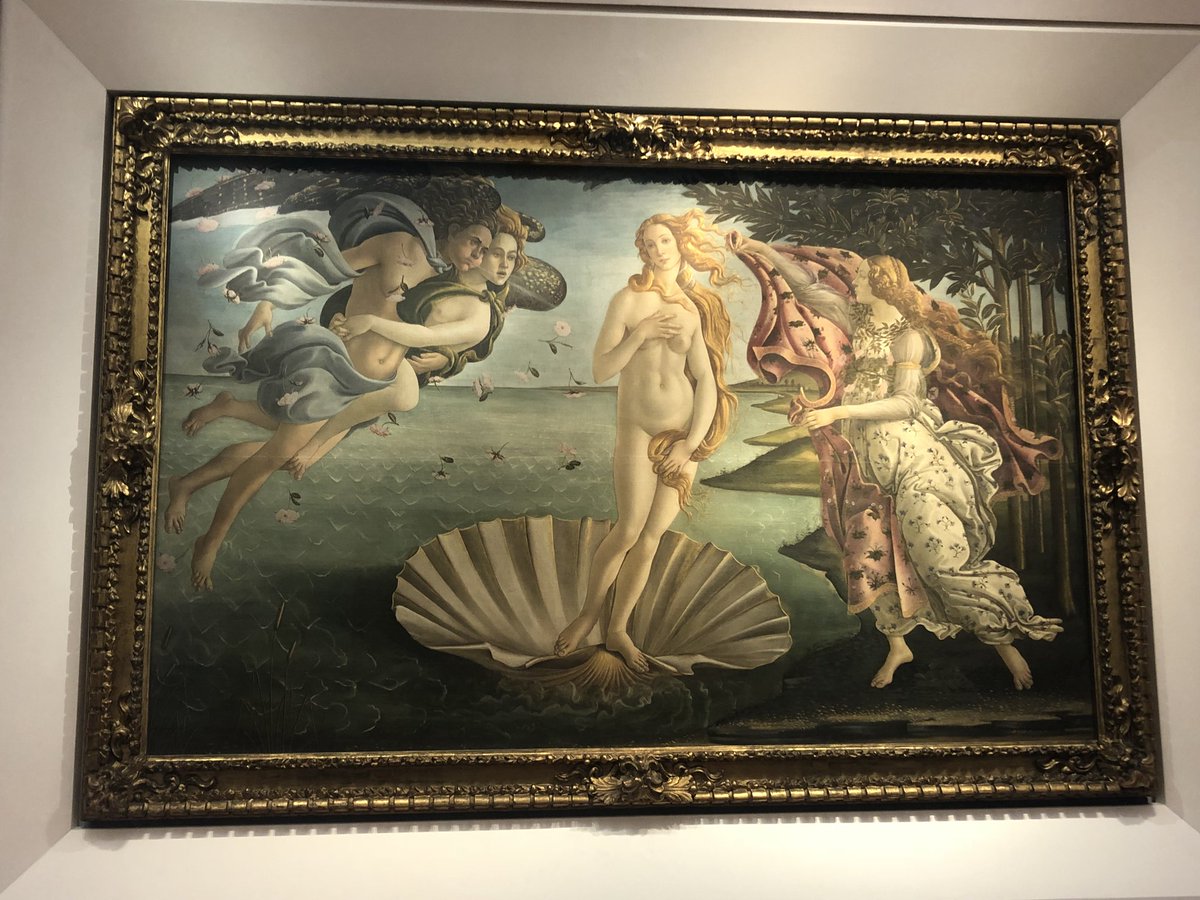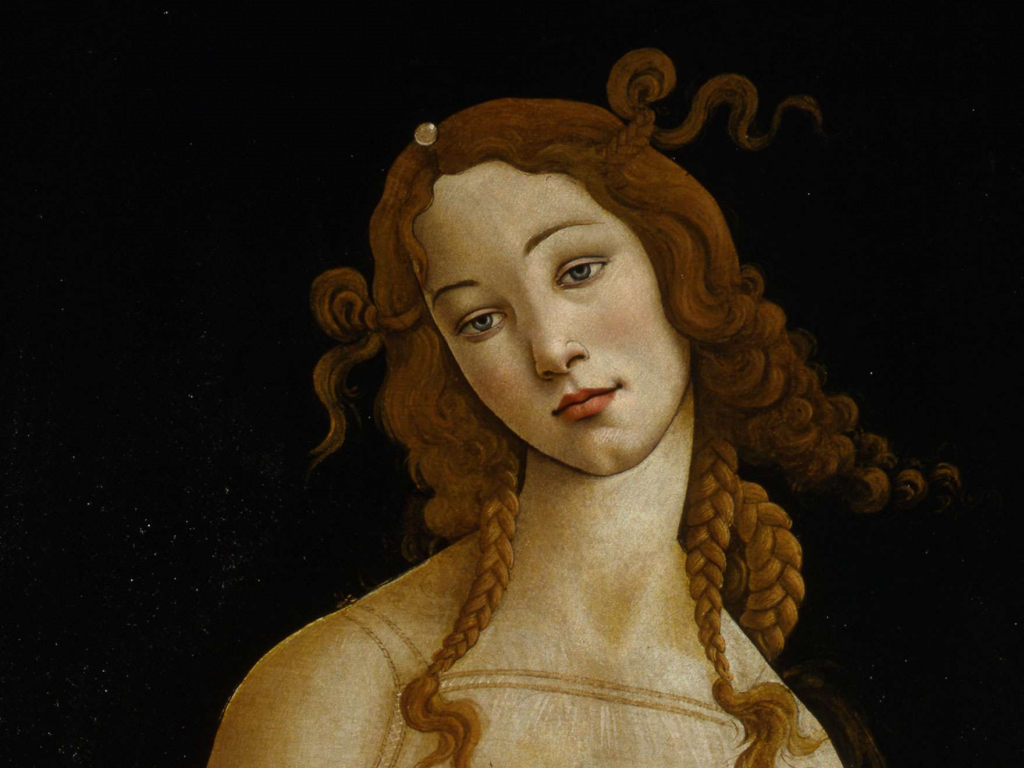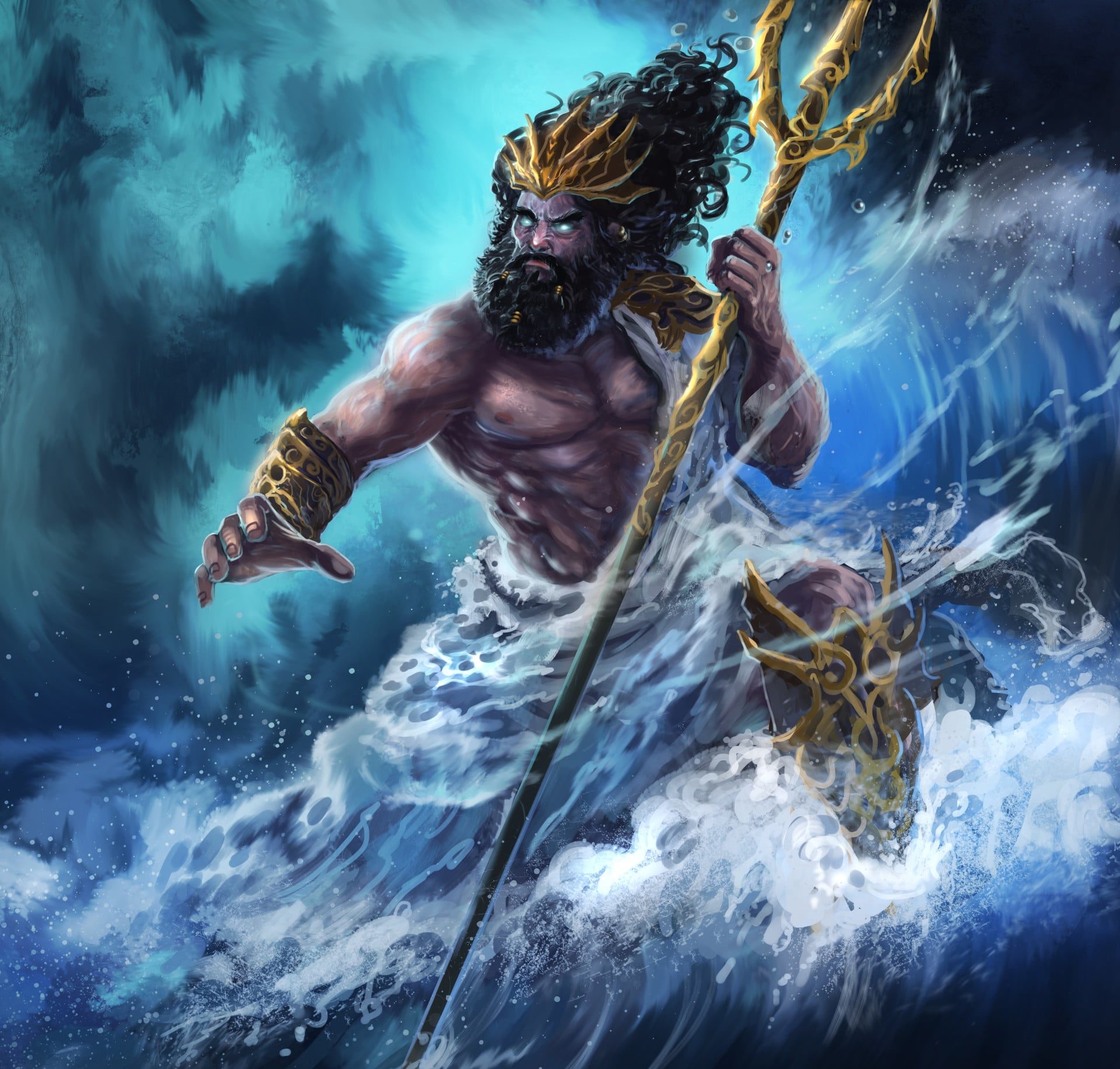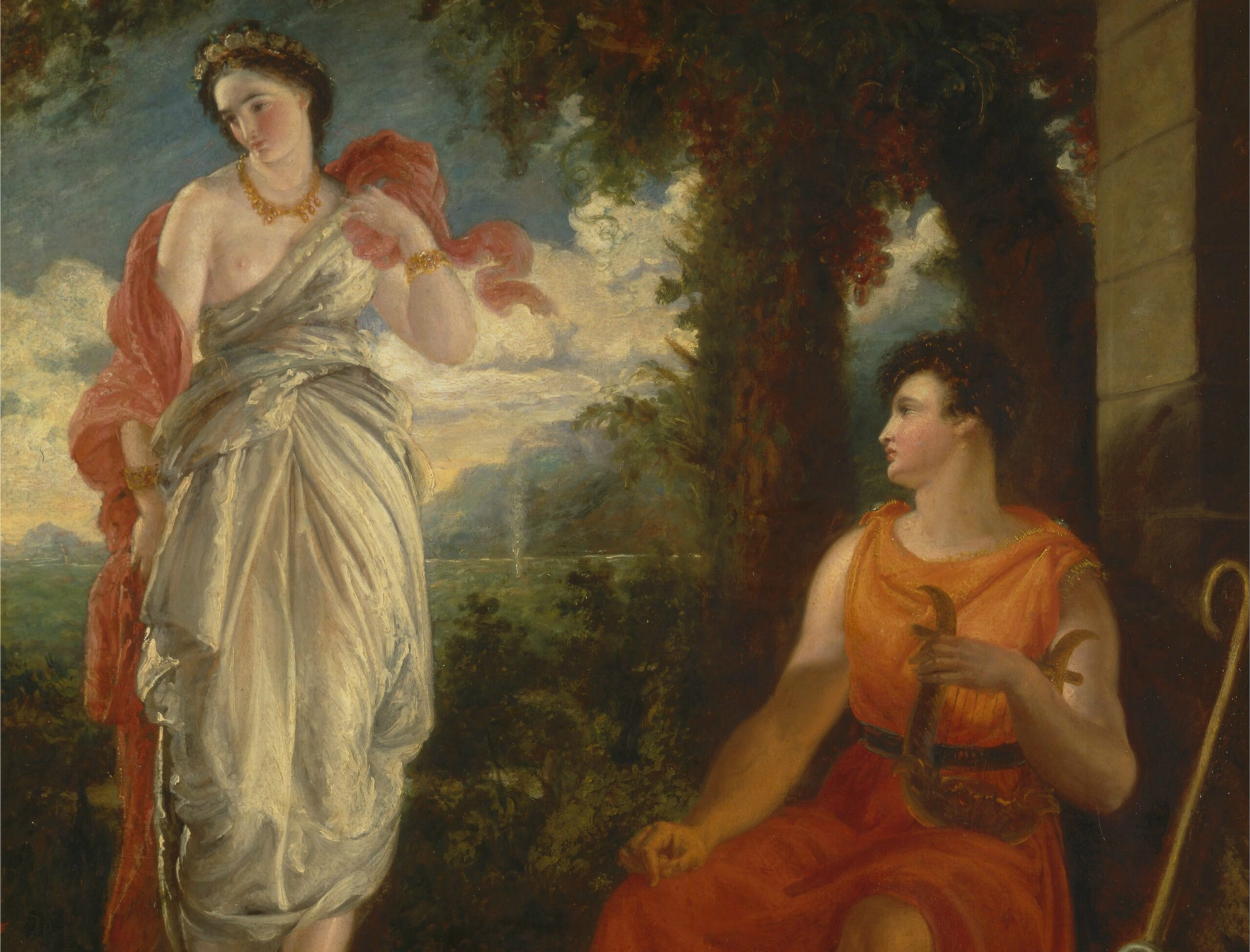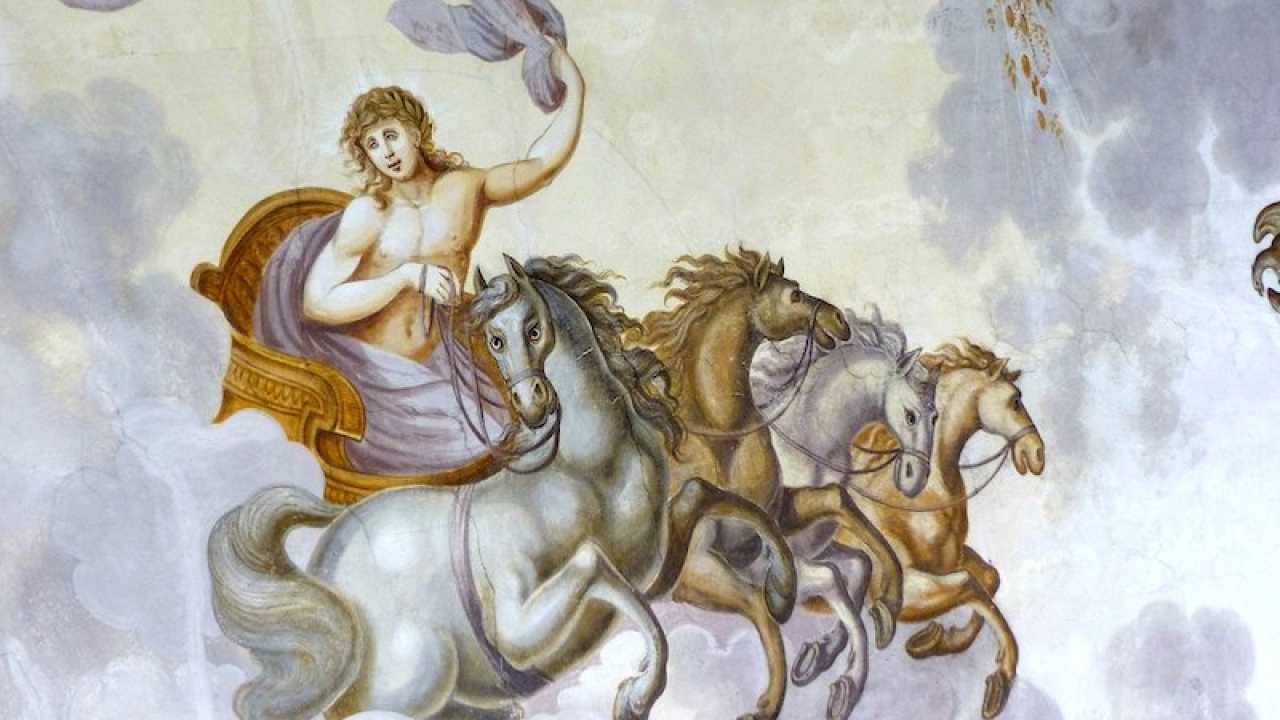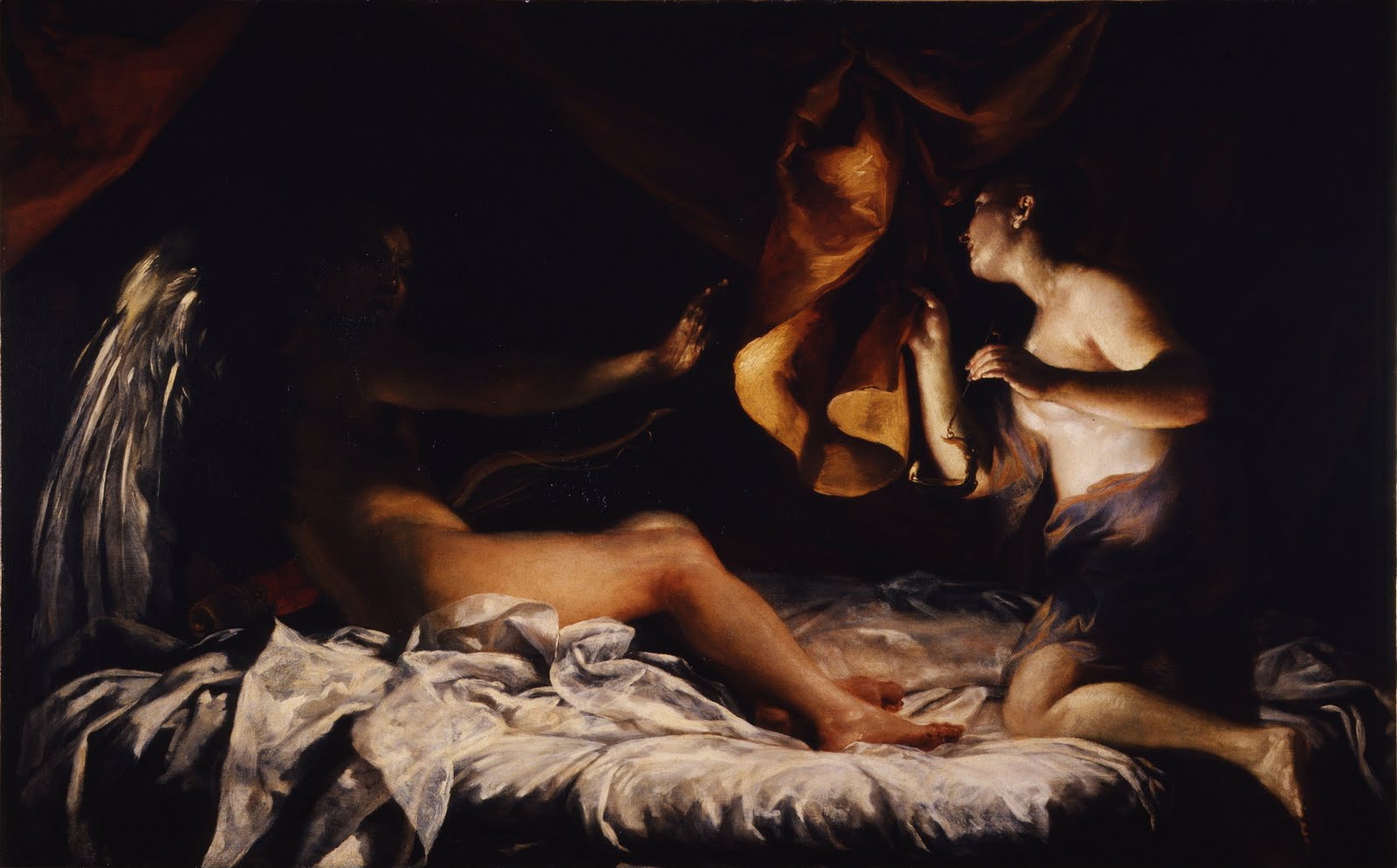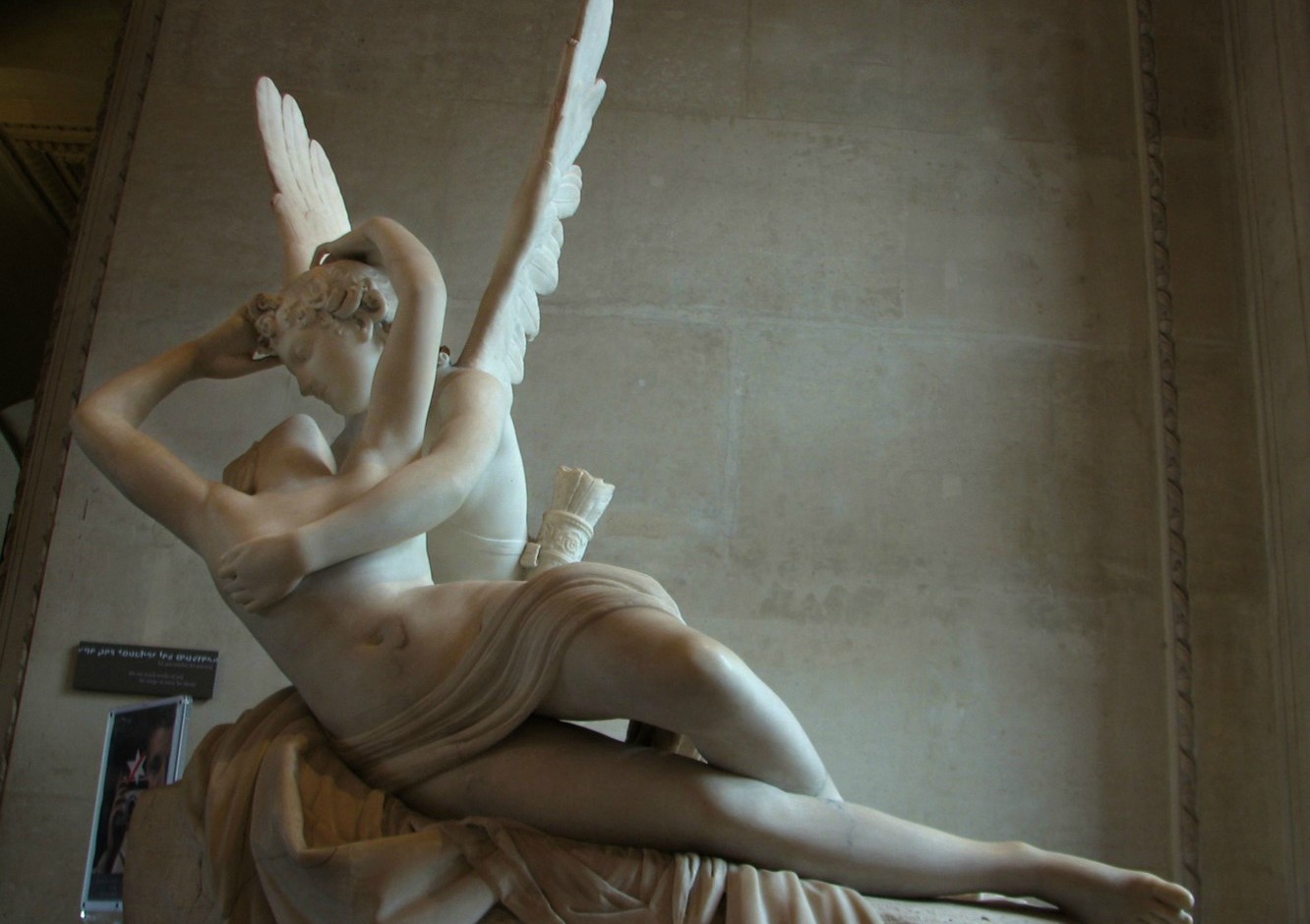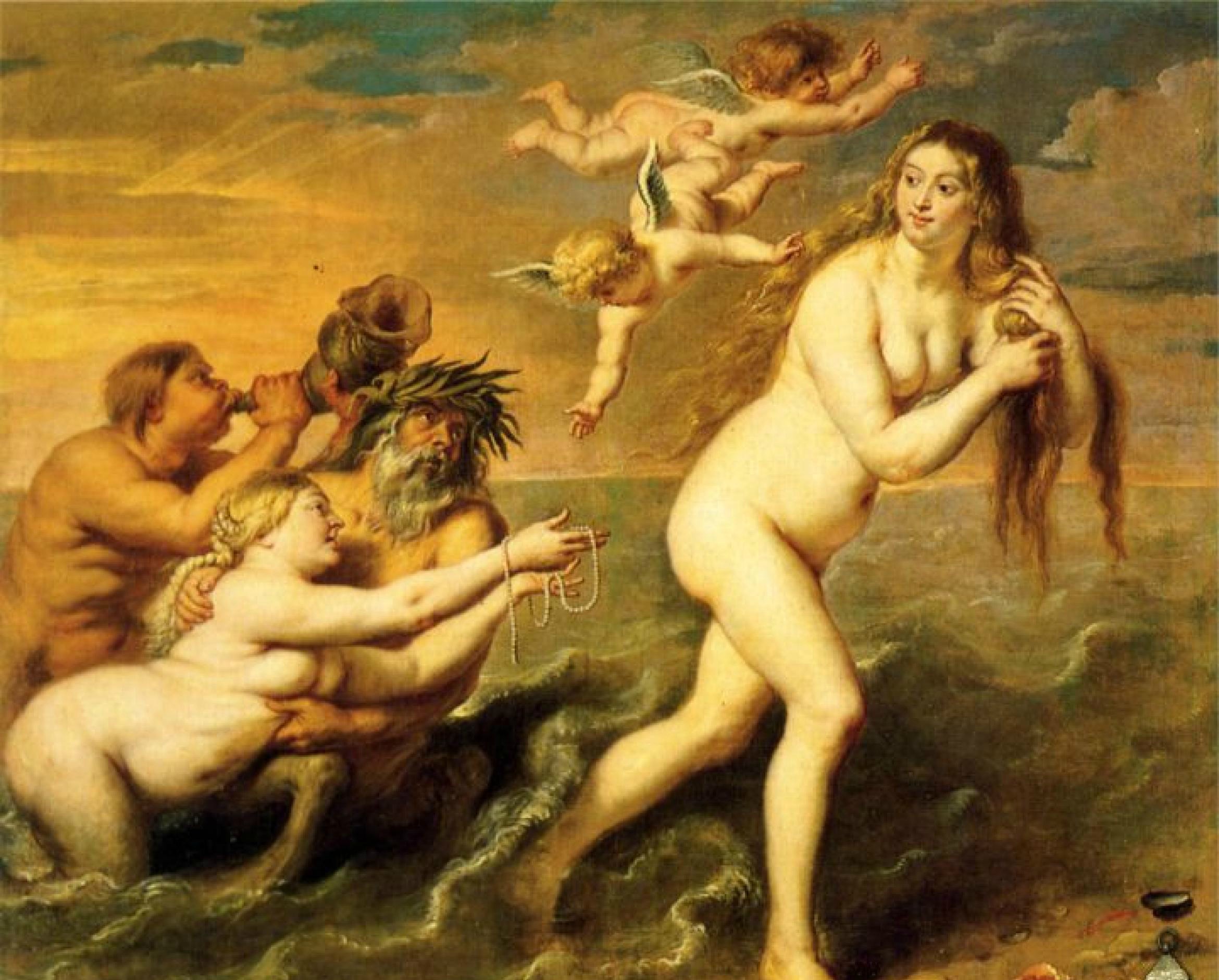It is the ancient Greek deity of love and beauty, linked with Venus by the Romans. Her name made up of the word Aphros which translates as foam, is related to the story of his birth, which Hesiod recounts in his Theogony. He knows everything about him! myth of aphrodite, the most beautiful divinity of the Hellenic pantheon!
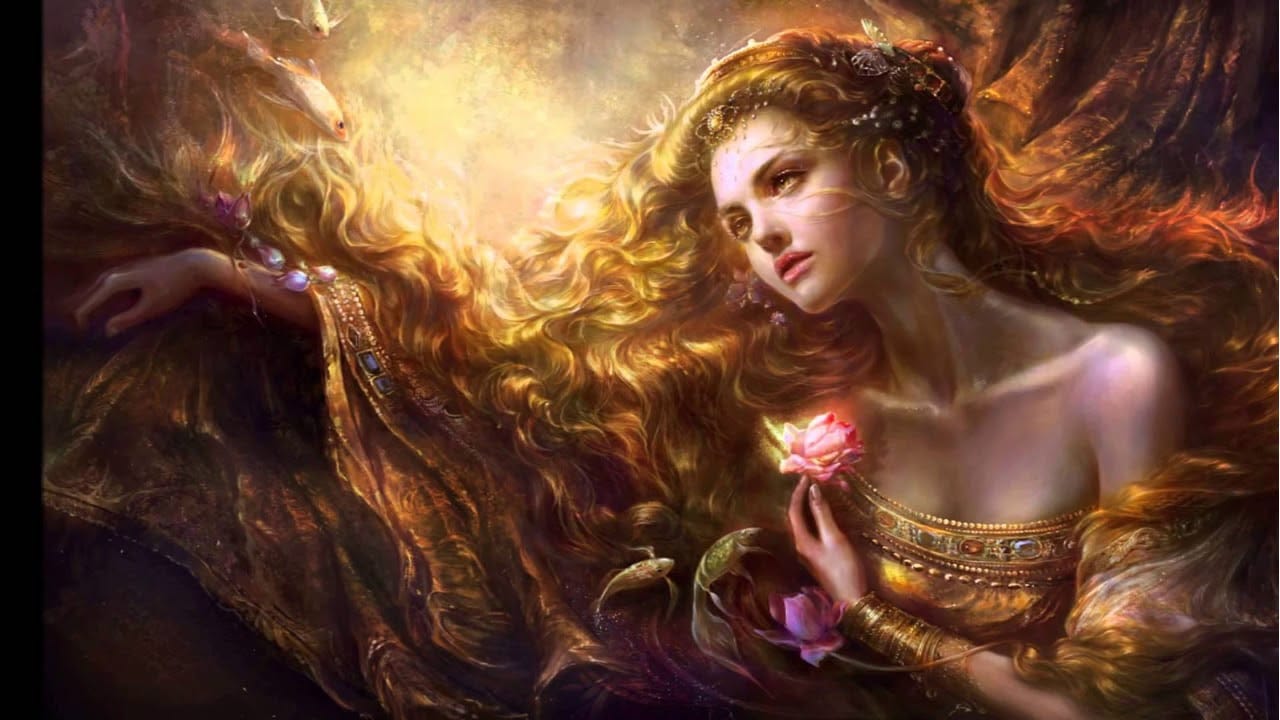
Knowing the myth of Aphrodite
Surrounded by mysticism, the origin of the exuberant Aphrodite is a mystery, the ancient stories indicate that she was born from the white foam produced by the amputated genitals of Uranus, when her son Cronos dropped them into the sea.
For this reason, Aphrodite was considered a marine deity and protector of seamen, invoked by sailors for a good journey. But she was also respected and honored as a deity of war, especially in cities with a long warrior tradition such as Sparta, as well as Thebes, Cyprus and other regions of the Hellenic nation.
However, in the Aphrodite myth she was primarily known as a goddess of love and fertility and even occasionally presided over marriage. On the other hand, in ancient times prostitutes considered Aphrodite their patron, her public worship was generally solemn and even austere.
Some scholars believe that the cult of the Aphrodite myth came to Greece from the East, as many of her attributes are reminiscent of the ancient Middle Eastern goddesses Ishtar and Astarte. Although Homer named her "Cipria" after the island chiefly famous for her worship, she was already Hellenized by Homer's time and according to her writings she was the daughter of Zeus and Dione, her consort in Dodona.
In Book VIII of the Odyssey, Aphrodite was at odds with Hephaestus, the lame blacksmith god, and consequently spent her time with the beautiful god of war, Ares. Thanks to these passionate romances, she became the mother of Harmonia, the warrior twins Phobos and Deimos, and Eros, the god of love.
Of the lovers of mortal nature, the most important in the myth of Aphrodite were the shepherd Anchises from Troy, by whom she became the mother of Aeneas, and the handsome young man Adonis, who was killed by a boar while hunting.
The women lamented it in the festival of Adonia, a form of worship of Adonis that had characteristics of the underworld, it should be noted that this exuberant goddess was also related to the dead in Delphi.
The main cult centers of the myth of Aphrodite were in Paphos and Amathus, in Cyprus and on the island of Cythera, a Minoan colony, where in prehistoric times her cult probably originated. On the Greek mainland, Corinth was the main center of her worship. Her close association with Eros, the Graces, and the Horae emphasized her role as promoter of fertility.
She was honored by the Roman poet Lucretius as Genetrix, the creative element of the world, and her epithets Ourania (Heavenly Dweller) and Pandemos (Of all the people) were used by the philosopher Plato to refer to intellectual and common love.
The term Ourania is considered an honorable mention and was used for certain Asian deities, while Pandemos refers to the position he occupies in the city-state.
In the myth of Aphrodite it is specified that among her symbols were the dove, the pomegranate, the swan and the myrtle. Representations of Aphrodite in early Greek art always present her dressed in a robe and she has no distinctive features that differentiate her from other goddesses.
However, it first achieved individuality at the hands of the great Greek sculptors of the XNUMXth century BC. Perhaps the best known of all the statues of the Aphrodite myth was carved by Praxiteles, the first large, unclothed female figure who later became the model for Hellenistic masterpieces such as the XNUMXnd-century Venus de Milo. to. c.
Birth of the myth of Aphrodite
Homer and Hesiod tell two different stories about the origin of this divinity in their writings. According to the first Aphrodite myth, she was the daughter of Zeus and the Titaness Dione, thus making her a second-generation goddess, just like most Olympians.
On the other hand, Hesiod tells a totally different myth of Aphrodite, much better known and popular, from ancient times to the present day. According to him, Aphrodite arose from the waters when the genitals of Uranus were thrown into the sea by one of her descendants, Cronus. The goddess of love emerged on a scallop shell, fully grown, naked, and more beautiful than anything anyone had seen before or since.
Where was the myth of Aphrodite born?
Paphos or Paphos, is these days a city in the southwest of the Republic of Cyprus. But in ancient times Paphos was also the name of two cities that were the forerunners of the modern city. The oldest city was located in present-day Pírgos (Kouklia) and New Paphos, which had replaced Old Paphos or Palaepaphos in Roman times, was 16 km further west. New Paphos and Ktima make up modern Paphos.
Ancient Paphos, which was colonized by Greek conquerors in the Mycenaean period, is said to have been the legendary birthplace of the Aphrodite myth, the goddess who emerges from the foam of the sea, and which also featured a famous temple honoring this goddess of the sea. hellenic pantheon
In Hellenic times, Paphos was second only to Salamis in extent and influence among the states of Cyprus. The Cinyrad dynasty ruled Paphos until its final conquest by Ptolemy I of Egypt (294 BC). Old Paphos declined in influence after the fall of the Cinyradae, the founding of New Paphos, and the Roman conquest of Cyprus (58 BC), eventually becoming deserted after the XNUMXth century AD
New Paphos, which had been the port city of Old Paphos, became the administrative capital of the entire island in Ptolemaic and Roman times. The city was attacked and destroyed by Muslim raiders in the year 960 and the modern city began to grow only after the British occupation in 1878.
The port, the center of city life, was improved in 1908 and 1959 but remains too small to handle heavy commercial traffic and therefore only serves an active local fishing fleet.
Despite economic difficulties stemming from the settlement of some 5.000 Greek Cypriot refugees in Paphos after the Turkish occupation of 1974, by the end of the decade the city had become the center of strong economic development, including an industrial estate and tourist hotels, that take advantage of its natural beauties and its rich mythology, especially when it comes to the goddess Aphrodite.
The city's manufacturing consists of small businesses that produce clothing, footwear, canned meat, beverages, and vegetable oils. Local points of interest include Orthodox Churches, the Djami Kebir Mosque, Paphos Castle, the Frankish Baths and the Aphrodite Sanctuary.
Names and epithets
Worshiped basically by everyone in ancient times, this divinity born from the sea, was called in different ancient cultures by different names:
- Greek: Aphrodite
- Roman: Venus
- Sumerian: Inanna
- Phoenicia: Astarte
- Etruscan: Turan
In addition to the different names that this ancient goddess received, different epithets were given to her that highlighted some of her qualities or characteristics, such as:
- pandemos: of all the people.
- Ourania: heavenly, ideal, pure love.
- Genetrix: the creativity of the world
- Cypris: Lady of Cyprus for having a deep-rooted cult on the island of Cyprus.
- Anadyomene: born from the foam of the sea.
- Cythera: Lady of Cytherea or who was impregnated in that place.
- pafia: Originally from Paphos.
- oenoply: armed, term used in Sparta
- Pelagia or Pontia: protector of seafarers.
- androphone: who killed men.
- Basil: Queen.
- Genetilis: maternity.
- philopannyx: of the whole night.
- Practice: of the sexual act.
Some Greek moralists tried to make a distinction between two Aphrodites, claiming that Aphrodite Pandemos is the goddess of desire, eroticism and lust and Aphrodite Ourania, that of platonic love. as Plato lets us see in this fragment:
We all know that there is no Aphrodite without love. In the case, then, that she was unique, there would be only one Love, but since there are two, there will necessarily be two loves. And how to deny that there are two goddesses?
One of them had no mother and is the daughter of Uranus, for which we give her the name of Urania; the other is the daughter of Zeus and Dione and we call her Pandemus. Hence, it is also necessary to properly call the Love that collaborates with this last Pandemo and the other Uranium. (Plato, Banquet 181 BC)
At present we know that it was a single goddess, a single myth of Aphrodite but that she was also named by other epithets that contradict each other and that usually describe the complicated and conflictive nature of love: smile lover, merciful yla that postpones old age, but also impious, dark or murderer of men.
Representation and symbolism of the myth of Aphrodite
If Apollo represented the ideal of the perfect male body for the Greeks, the myth of Aphrodite was certainly its more appropriate female counterpart. Beautiful and charming, she was often depicted nude, a symmetrically perfect maiden, infinitely desirable and beyond her reach.
She was sometimes depicted alongside Eros and with some of his main attributes and symbols: a magical sash and shell, a dove or sparrow, roses and myrtle. Many artists have tried to recreate it over the past centuries, including the master sculptor Praxiteles and the painter Apelles, whose famous work is long lost.
Praxiteles modeled a famous sculpture of Aphrodite, a piece that has survived to this day. His mistress and his muse for the piece was Phryne, a beautiful Greek lady-in-waiting, considered the most coveted of the time.
Praxiteles' sculpture of Aphrodite is one of the best-known female nudes in history. Plato says that when Aphrodite saw the sculpture, she was surprised and asked where the sculptor saw her without any clothing.
Aphrodite had no childhood, so she is constantly portrayed as a young adult, already of marriageable age, irresistible and desirable, usually without any clothes.
personality of the deity
She is a figure of beauty without equal, that is indicated by the myth of Aphrodite and, knowing this, she is vain, fickle, temperamental and extremely susceptible, she is easily offended and vindictive. Although she is married, something that is not common in the gods of the Greek Pantheon, she is very often blatantly unfaithful to her husband.
In the Aphrodite myth, she is described as relentless and vindictive, few dared to resist her power and she showed no mercy to any, typical of her character when challenged. For example, Hippolytus preferred Artemis to her, Aphrodite made her stepmother Phaedra fall in love with him, which resulted in both her and Hippolytus' deaths.
After Aphrodite found out that Eos the goddess of the dawn had slept with Ares, she cursed her to be perpetually and unhappily in love. Diomedes the Greek hero wounded the goddess during the Trojan War, he was about to kill Aeneas and attacked the goddess herself causing damage to her wrist.
Aphrodite quickly released Aeneas, who was rescued by Apollo, another Olympian protector of the Trojan. Diomedes should have thought better of challenging Aphrodite, because her temperamental deity made the Greek's wife, Aegiale, suddenly start sleeping with her enemies.
Psyche the personification of the soul, would have gone through an even worse ordeal, such as descending into the underworld. But, fortunately for her, Eros, the avenger of Aphrodite, fell in love with her.
The loves and adventures of Aphrodite
The almighty Aphrodite, is the goddess that not even the gods can resist, known as an unbridled lover and of supernatural beauty, the daughter of Uranus has a list of legal and illegal romances that you should definitely know:
Aphrodite and the Hellenic gods
The myth of Aphrodite indicates that her beauty made many of the Olympians lose their minds, who desperately wanted to appropriate the immortal beauty of the woman, who never had among her plans to be faithful to anyone. Some of the deity's best-known romances include:
Aphrodite and Hephaestus
Aphrodite was so beautiful that only the three virgin goddesses, Artemis, Athena, and Hestia, were immune to her charms and power. As expected, the moment she arrived on Olympus, she intentionally or unintentionally wreaked havoc among the other gods, each of whom instantly wanted her for their own.
To prevent this, Zeus hastened to marry her off to Hephaestus, the ugliest of the Olympians. Something that contained the inconvenience for a very short time, simply because Aphrodite did not plan to be faithful to her spouse.
Aphrodite and Ares
Although she was forced to marry, the goddess was impetuous and passionate, so being faithful was not her style. So, she started an affair with someone just as destructive and violent as she is: Ares.
Helio, however, saw them and informed Hephaestus. This one, whom the other gods saw as the horned god, made sure to design a fine metal net, which ensnared the pair the next time they lay in bed together. To add insult to injury, Hephaestus asked all the other gods to laugh at the adulterers and released them only after Poseidon agreed to pay for their release.
But this did not make her give up, the myth of Aphrodite relates that her love affairs continued and after the scandal of the bronze net, she gave birth to approximately eight children of the god of war: Deimos, Phobos, Harmonia, Adrestia and the four Erotes, called Eros, Anteros, Pothos and Himeros.
Aphrodite and Poseidon
Poor Hephaestus! He never imagined that the lustful and infatuated Poseidon would fall in love with Aphrodite. Seeing her without clothes, he fell madly in love with her, although for the god of the seas this was not difficult at all. Long afterward he undoubtedly found out, for Aphrodite bore the lord of the seas at least one daughter, whom they named Rhode.
Aphrodite and Hermes
Hermes did not have many consorts, but he did have a very short but intense affair with Aphrodite. Also considering that Priapus in ancient accounts is seen as a descendant of Dionysus and Aphrodite, it seems that only Zeus and Hades did not succumb to the passion for the goddess of love. Although the lord of the underworld didn't even live on Olympus and the former may have been his father.
Aphrodite among mortals
When she wasn't busy making other people fall in love, Aphrodite had some time to fall in love herself and it wasn't just the gods that were her target. Like many other deities of the Hellenic pantheon, Aphrodite sometimes cast her eyes on mortals:
Adonis
Adonis was the son of Myrra, a woman whom Aphrodite turned into a tree. The goddess placed him in a box and took him to the underworld, asking Persephone to take good care of him. However, when she returned to the underworld to see him long after, she fell in love with the now unusually handsome mortal upon seeing him.
So, she asked Adonis to come back with her. Of course Persephone who had taken care of him, would not allow it. The father of the gods, Zeus, ended the confrontation by deciding that Adonis would spend time with each of the deities, both in the outside world and in Hades.
However, Adonis preferred Aphrodite and when the time came, he did not want to return to the underworld. Persephone sent a boar to kill him and the handsome young man bled to death in Aphrodite's arms. The couple had two sons: Beroe and Golgos.
anchises
On another occasion, Aphrodite fell in love with a Trojan prince named Anchises, pretending to be a princess, seduced him and slept with him. Only later did she reveal herself, promising him a noble son and warning him that she kept this secret to himself.
Anchises couldn't keep his story to himself, so he was struck by Zeus' thunderbolt that blinded him, so the prince never got to see his son, Aeneas, the fearless monarch of the mighty Roman Empire.
Paris
Paris, the Trojan prince, was the last man to see the goddess Aphrodite. This happened when he was given the task of judging who of the three goddesses - Aphrodite, Hera or Athena - was the most beautiful.
Aphrodite promised Paris the most beautiful girl in the world if she chose her, so naturally she did. Aphrodite made sure to get Helen, the Spartan queen, an event that triggered the bloody Trojan War that lasted a decade.
The cult of the myth of Aphrodite
The cult of the myth of Aphrodite was very popular in ancient Greece with numerous sanctuaries and temples throughout the country. Her main cult centers within Greece were the city of Corinth on the Isthmus and the island of Kythera (Cytherea) off the coast of Lakedaimonia.
The respect and faithful belief in Aphrodite in Greece derived from that of the Phoenician goddess Asarte and the Mesopotamian divinity Ishtar, who were related to love, fertility, sexuality and procreation.
Beyond Greece, the island of Kypros, or Cyprus, was famous for its mysterious worship of the goddess, for Aphrodite was also honored here with private rituals and prayers. She was worshiped as a warrior goddess and was also the patron goddess of prostitutes. This deity has been portrayed as a complicated goddess, but generous and loving to those who respected her, she could be easily offended and thanks to her bad temper, many of her enemies received brutal reprimands.
Cult in Cyprus
The cult of the Aphrodite myth, which was widespread in Cyprus, was centered in the Paphos area and dates from 1.500 BC. The Paphos district features Aphrodite's birthplace at Petra Tou Romiou, the Aphrodite Shrine at Palaepaphos, and Aphrodite's Bath near Polis.
In legend, Aphrodite emerged from the foam of the sea and became the consort of King Kinyras. In a fit of jealousy, Aphrodite turned her beautiful daughter, Myrrha, into a fragrant bush, a myrrh-bearing rock rose, Cistus creticus, which grows all over Troodos. Adonis was born from the bramble forest and became the lover of Aphrodite.
In fact, the legend is based on the Kinyrid dynasty and the rituals of Aphrodite and Adonis survive in Paphoit's spring flower festival, the Anthistiria, and the flood festival in June, Kataklysmos, where a plunge into the sea makes echo of the output of this beautiful deity of the waves.
Astarte was admitted by the Greeks under the name of Aphrodite and the island of Cyprus was one of the major centers of faith in this figure, which later gave her the name of Cypria as the most common nickname for Aphrodite.
It may then be that Aphrodite was born figuratively, on her long passage by sea from the Assyrian world to the ancient Greek world in Cyprus, a convenient spot between the two territories where her transformation from Astarte/Ishtar to the goddess Aphrodite took place and could be located. .
The cult of Aphrodite can be traced back to the Assyrian cults of Ishtar and Astarte. There is evidence that Ishtar and Astarte were worshiped at Paphos in the early Iron Age and were brought, as it were, to the island by the Phoenicians along with the Egyptian cult of Hathor, who may also have been identified with Aphrodite.
Ishtar was a goddess of love and war and her worship involved sacred prostitution and was generally fatal to her lovers. Astarte was another goddess of love and war and she was highly revered throughout the ancient Middle East. She appears in ancient Egypt during the 1550th dynasty, between 1292-XNUMX BC.
In fact, the ancient history of Cyprus is also a story of changing cults and gods and goddesses of the different rulers and colonizers of the island. The Phoenicians introduced their own deities: the goddesses Astarte and Anat and the gods Baal, Eshmoun, Reshef, Mikal, Melqart and Shed.
They also introduced the Egyptian cults of Bes, Ptah, Hathor, and Thoeris. In the fourth century a. C., Greek cults became widespread on the island and there is a gradual identification of Cypriot and Phoenician gods and goddesses with Greek deities.
But beneath all this is evident the centrality of the Great Mother Goddess of fertility, whether known as Aphrodite, Astarte, Wanassa (the lady'), Hathor or Athena.
Cult in Sicyon
In ancient times it is stated that, in the South of Greece, in Sikyon there is an enclosure, sacred to Aphrodite. The first thing inside is a statue of Antiope.
After this is the sanctuary of Aphrodite, which is entered only by a woman who after her appointment cannot have sexual relations with a man, who holds her sacred office for a year. she contemplates the goddess from the entrance and prays from that place.
The image, which is seated, was made of gold and ivory, it has a poppy in one hand and an apple in the other, offerings are presented to it, which are then burned in juniper wood and a juniper leaf is added to the offering. the payers.
This is a plant that grows in the open parts of the enclosure and is not found anywhere else. They are smaller than those of the oak, but larger than those of the oak, with a shape similar to that of the oak leaf. One side is dark in color, the other is white, like that of white poplar leaves.
Worship in Athens
There was a sanctuary of Ares in Athens, where two images of Aphrodite, one of Ares and one of Athena, are placed. There is also a sanctuary of Aphrodite Ourania, the Assyrians being the first men to establish the cult of her, after them, the Palestinians of Kypros and the Phoenicians who live in Askalon in Palestine.
Aegeus established the cult among the Athenians, because he thought he had no offspring and would suffer calamities because of the wrath of Aphrodite Ourania, so he decided to pay tribute to her. The statue that is still preserved is made of marble from Paria and is the work of Phidias.
One of the Athenian parishes is that of the Athmoneis, who say that Porphyrion, a king before Aktaius, founded their sanctuary at Ourania. But the traditions between the parishes often differ completely from those of the city.
Aphrodite in the Arts
The myth of Aphrodite, the Olympian goddess of beauty, love and procreation, has been the subject of works of art since the XNUMXth century BC. C. in the colonies of ancient Greece. Over the millennia, the figure of Aphrodite has been depicted in many forms and with many different materials.
There are versions of her partially clothed, completely naked, combing her hair, riding her chariots and dancing with other gods, in varied materials such as marble, terracotta, stone and ceramics. A myriad of paintings, drawings, and prints depict the goddess as a subject, many of which illustrate her life.
in the sculpture
The best known representation of Aphrodite is the famous Greek statue, Venus de Milo, by Alexandros of Antioch, which remains in the collection of the Louvre, Paris. Controlling the skies in her chariot drawn by doves and the seas in her chariot drawn by mermen, Aphrodite was the goddess of love, beauty, pleasure and fertility. She was syncretized with the Roman goddess Venus.
In classical Greek sculpture, the deity was recreated as a nude or half-nude female figure, with stylized arms that try to cover themselves, in a gesture of false modesty.
Between the years 364-361 BC the Athenian sculptor Praxiteles carved the marble statue entitled Aphrodite of Knidos or Venus of Cnidos which was praised by Pliny the Elder as the largest sculpture ever made.
It was the first Aphrodite without a robe, made by the artist around the XNUMXth century BC as a cult effigy of the city-state of Knidos (Cnidus). There is no doubt that this work was received with some controversy in those days, but the style quickly became the norm.
Another sculptural piece of great prestige is The Birth of Aphrodite, is the main relief of the Ludovisi Throne located in the famous Altemps Palace, in Rome.
It is estimated that it was made between 460 and 470 BC and it is a spectacular piece, made in bas-relief on a large block of white marble. It is the classic scene from the myth of Aphrodite where the goddess is shown rising from the sea. It is currently in the National Roman Museum.
In the paint
There are many paintings and frescoes on the myth of Aphrodite, as it was a source of inspiration for many artists who did not hesitate to unleash their talent to portray her:
Aphrodite rising from the sea (Apelles)
Apelles painted the goddess and his now-disappeared work of art was titled Venus Anadiomena or Aphrodite rising from the sea, again taking Phryné as a model.
According to Athenaeus of Náucratis, the woman had a beautiful body that she always covered with a tunic, she normally did not go to public baths, so she was never seen without clothing. However, in the Eleusinian festivals and in those held in honor of Poseidon, she took off her clothing and left her hair loose in the presence of everyone to go swimming in the sea.
There were many people who gathered during this important religious festival, still, she decided to swim naked and the famous painter Apelles was so overwhelmed by the exquisite vision that he drew the most famous painting of the ancient world, which is now lost: Aphrodite rising from the sea.
Definitely, when the artist saw her come out of the water, he was inspired by her beauty to recreate the goddess Aphrodite, whom the world describes as the deity of captivating beauty.
The Birth of Venus (Alexandre Cabanel)
In the work you can see the image of Aphrodite, when she is carried to the shore of the beach by the foam of the sea. It is a work from the year 1863, which is based on the classic myth of the birth of the goddess, allowing artists to paint nudes and refer to eroticism, without shocking the people of the time. It was undoubtedly a success in Paris, acquired by Napoleon III.
The birth of Venus (Sandro Botticelli)
La nascita di Venere or the birth of Venus by Botticelli is one of the most famous representations of the birth of Aphrodite. It was made between 1482 and 1485. This magnificent piece by the Renaissance artist shows a nude without trying to justify it with religious reasons, moving away from the characteristic darkness of the Middle Ages.
Birth of Venus (W. A. Bouguereau)
This 1879 work is one of the most important paintings by this artist and also represents the birth of the goddess, as an adult, naked and emerging from the foam of the sea.
Aphrodite (Briton Riviere)
A beautiful work made in 1902 by the renowned English artist, who was characterized by incorporating animals in his paintings, very realistic and of great beauty.
The Mirror of Venus (Edward Burne-Jones)
This oil on canvas painting by Sir Edward Burne-Jones in 1877 evokes Renaissance works, in the softness of the melancholy faces in delicate, classical clothing.
It does not narrate any episode in particular, it only shows the figure of the goddess and her companions contemplating each other in the pond, surrounded by a sober landscape that tries not to take away the prominence of the figures.
Venus, Adonis and Cupid (Annibale Carracci)
It is an oil on canvas work that is currently part of the collection of the Prado Museum in Madrid. It was made in 1590 and is considered one of the most important works of this artist.
Mars and Venus (Sandro Botticelli)
Made in 1483, it is a painting of great beauty and realism, where you can see the great lovers surrounded by satyrs. In this painting, Venus sees Mars dozing, while two small satyrs play with the warrior's armor and another remains calm under his arm.
The scene is set in an enchanted forest, the sense of perspective and the horizon are extremely narrow and compact. In the foreground, a swarm of wasps hovers over Mars's head, possibly as a symbol that love is often accompanied by pain.
in classical literature
As expected, there are many stories and references to Aphrodite in classical literature, some very beautiful, such as the invocation of Aphrodite by Lucretius, at the beginning of On the nature of things or the longest of the three Homeric Hymns dedicated to Aphrodite. Some excerpts from these writings can be read below:
Callimachus, Poem
These gifts to Aphrodite were dedicated by Simon, the light of love: a portrait of her and the belt that kissed her breasts, and her torch, yes, and the wands that she, the poor woman, wanted to carry.
Plutarch, Life of Theseus
The women of Athens were at that time celebrating Adonia, the festival of Aphrodite and Adonis, and in many places in the city small images of the god were placed for burial, and funeral rites were held around them, with wailing cries of women. , so that those who cared about such matters were distressed.
Virgil, The Aeneid
Venus then, moved as a mother by the unworthy pain of her son, picks up the dictamus in the Cretan Ida, the stem of wrinkled leaves that in a flower ends in purple; Wild goats are not unaware of this herb when flying arrows pierce their backs.
Venus, with the figure hidden in a dark cloud, brought it and with it colors the water poured into a shining bowl, curing in secret, and waters it with the juices of the healthy ambrosia and with the odorous panacea.
Homer, Hymn V
Tell me, Musa, the actions of the very golden Aphrodite, of Cypris, who awakens sweet desire in the gods and tames the races of mortal people, the birds that flutter in the sky and all creatures, both the many that the mainland nourishes, like how many the ponto nourishes.
Everyone is affected by the actions of Cythera, the well-crowned. Three hearts there are, however, which she can neither persuade nor deceive...
She takes away even Zeus who revels in lightning... Tricking when she wants their shrewd minds, unites him with the greatest ease to mortal women, making him forget about Hera...
https://youtu.be/Cu72R5PY_9s
Lucretius, Nature of things
Thanks to you every living species is conceived and arises to contemplate the light of the sun: before you the clouds flee, the earth spreads a carpet of flowers, the plains of the sea smile at you and a placid radiance spreads through the sky.
For as soon as spring reveals its face, the birds of the air first greet you and announce your arrival; afterwards, beasts and herds romp through the lush pastures and cross the rapid rivers: thus, caught by your spell, they all eagerly follow you.
Roman name of Aphrodite
Venus is an ancient Italian goddess associated with cultivated fields and gardens, later equated by the Romans with the temperamental Greek goddess, Aphrodite.
It is true that the identification of Venus with Aphrodite took place quite early, a contributing reason perhaps being the date of the foundation of one of her Roman temples, which coincides with the Vinalia Rustica, a feast of Jupiter on August 19.
Therefore, he and Venus became related as father and daughter and were associated with the Greek deities Zeus and Aphrodite. She was also the daughter of Dione, the wife of Vulcan and was the mother of Cupid.
In the different myths and stories she was famous for her romantic intrigues and her adventures with both gods and mortals, she was associated with many aspects of femininity, good and not so good.
As Venus Verticordia, she was charged with the protection of chastity in women and girls. But the most important cause of the identification was the reception in Rome of the famous cult of Venus Erycina, that is, of Aphrodite of Eryx (Erice) in Sicily, this cult itself is the result of the identification of an Eastern mother goddess with the greek deity.
This reception took place during and shortly after the Second Punic War, a temple to Venus Erycina being dedicated on the Capitol in 215 BC. C. and a second outside the Colline gate in 181 B.C. c.
The latter was built with a certain resemblance to the temple of Eryx, becoming the place of worship for Roman courtesans, hence the title of dies meretricum ("day of the prostitutes") attached to April 23, the day of its foundation.
The importance of the cult of Venus-Aphrodite was increased by the political ambitions of the gens Iulia, the clan of Julius Caesar and, by adoption, of Augustus. Who claimed to descend from Iulus, the son of Aeneas who was the alleged founder of the temple of Eryx and in some legends, also of the city of Rome.
From the time of Homer onwards, he was made the son of Aphrodite, so that his descent gave divine origin to Iulii. Others besides the Iulii attempted to connect with a deity who became so popular and important, notably Gnaeus Pompey the triumvir, who dedicated a temple to Venus as Victrix (Victory Bringer) in 55 BC. c.
The temple of Julius Caesar (46 BC), however, was specially erected to Venus Genetrix (Mother begetter), who was well known until Nero's death in 68 BC Despite the extinction of the Julio-Claudian line , remained popular, even among emperors, for example Hadrian completed a temple of Venus in Rome in 135 BC
As a native Italian deity, Venus had no myths of her own, so those of Aphrodite are associated with her as well, and through her, she became identified with various foreign goddesses.
The most notable result of this development is perhaps the planet Venus's acquisition of that name. The planet was originally the star of the Babylonian goddess Ishtar and from there became Aphrodite or Venus.
Due to her association with love and feminine beauty, the goddess Venus has been a source of inspiration in artistic expressions since these ancient times. The most notable works that have the deity as their center are: the Venus de Milo (150 BC) and the painting by Sandro Botticelli, entitled The Birth of Venus (1485).
Discover which is the most interesting myth of Aphrodite
The myth of Aphrodite is surrounded by beauty, love, passion and bad temper, even when they say that she is an affective goddess, most of her stories are characterized by demonstrations of her volatile temperament. Let's get to know some very interesting ones:
Aphrodite's marriage
According to one version of the Aphrodite myth, due to her extraordinary beauty, Zeus begins to worry about the reaction of the other gods. The possibility that they will become violent rivals to possess her was latent and precisely to avoid this, he forces the unfortunate Aphrodite to marry Hephaestus, the severe and humorless, but talented god of blacksmithing.
In another version of the story, Hera throws Hephaestus out of Olympus, considering him unpleasant, horrible and deformed to inhabit the home of the gods, even though he is her son.
Hephaestus already in adulthood, decides to take revenge on his mother. He crafts a majestic magical throne and sends it as a gift to the goddess. She barely sat on it, Hera was trapped, unable to free herself from her.
Hephaestus is called to Olympus to free Hera and he demands, among other things, that he be given Aphrodite's hand in marriage in exchange. Zeus grants her request and the god delighted to be married to the goddess of beauty, forges her beautiful and priceless jewelry, including a belt or corset that accentuates her chest and makes her even more irresistible to men. mens.
Her unhappiness with this unwanted marriage causes Aphrodite to seek out other male companionship, most often Ares, but also Adonis and Poseidon.
Aphrodite's husband, Hephaestus, is a subdued and silent Greek deity, but it is not a style that appeals to the volatile Aphrodite, who prefers Ares, the young and strong god of war, because she is attracted to his violent nature, at least that is what Homer somehow explains in the Odyssey.
But not a single adventure is known to the deity during their marriage. She was the lover of the Trojan Anchises and the mother of his son Aeneas, of the handsome Adonis, of Poseidon, among others.
The myth of Aphrodite and Adonis
Adonis's mother was the beautiful Myrrha or Smyrna and his father, King Cinyrus of Cyprus, who was also Myrrha's father. Yes, father and daughter came together and conceived a son! However, this was not intentional.
This strange situation occurred because the goddess Aphrodite was jealous of Myrrha's beauty and caused the girl to join her own father.
When the monarch realized what he had done, he pursued Myrrha with a sword, intending to kill her and her unborn child.
This time Aphrodite went too far and regretting her act, quickly turned the girl into a myrrh tree to save her life.
The newborn child, who received the name of Adonis, he placed in a chest, which he gave charge to Persephone, queen of the underworld. When Persephone opened the order she was captivated by the baby's beauty, so over time when she claimed it, Aphrodite refused to return it to her.
Although the goddess of love descended to the underworld to rescue baby Adonis from the power of the dead, she was denied permission to take him away. The end point to the dispute between the two goddesses was put by Zeus, who decreed that Adonis should remain with Persephone in the underworld for part of the year and with Aphrodite in the upper world the rest.
The contest between Aphrodite and Persephone for the possession of Adonis clearly reflects the struggle between love and death, a common theme in Greek mythology, as we see it in the myth of Persephone and Hades. Zeus' decision that Adonis will spend part of the year underground and part on the surface is simply a Greek myth about the notion of annual disappearance and reappearance, which refers to spring and winter.
In some versions of the myth of Aphrodite and Adonis, when Ares, the god of war and Aphrodite's lover, learns that Aphrodite loves the young Adonis, he became really jealous and decided to take revenge. In other stories, Adonis did not want to return to the underworld anymore and Persephone decides to take revenge.
The truth is that the story indicates that Aphrodite was chasing Adonis, madly in love with him, but the beautiful young man was more interested in hunting. The goddess of love begged Adonis to give up this dangerous sport even though she enjoyed it, because she could not bear to lose him.
But the intrepid Adonis ignored his advice and was killed by a fierce boar while hunting, it is said that the animal was actually the God Ares and other versions, that he was an emissary of Persephone. When Adonis was attacked, Aphrodite heard his screams and rushed to her side in her swan-drawn chariot. She saw the mortally wounded boy and then cursed the Fates and Ares who had ordered his death.
With Adonis still dead in her arms, Aphrodite turned the drops of blood that fell from his wounds to the ground into windflowers as a tribute to her love. The flowers sprouted from the blood of Adonis and his spirit returned to the underworld.
the golden apple
On the occasion of the wedding of Peleus and Thetis, Zeus organized a feast, everyone received an invitation except Eris, the goddess of discord.
This in the same way went to the banquet and intentionally dropped a golden apple, it exhibited the inscription for the most beautiful. Of course it was a ruse to create discord and that certainly happened, three deities demanded the apple.
This time it was the three goddesses, Hera, Athena and Aphrodite. But since they all wanted it for themselves, they needed someone to decide who the apple would be for. These three temperamental goddesses wanted to find out which of them was the most beautiful. Then, they requested the help of Paris, son of King Priam of Troy, he would be the one who would end the dispute.
Paris chose Aphrodite as the most desirable. Each of the goddesses promised something to Paris if he chose her as the most beautiful, in the case of Aphrodite, she made a promise to the Trojan prince to make her wife the most beautiful woman on earth. This definitely gave her a competitive edge over the other goddesses, making her the victor over her.
Aphrodite's reward was the golden apple, a symbol of her beauty, and Paris's was Helen. Yes. the Helen that ended up causing the Trojan War.
Aphrodite and Anchises
There was a time when Aphrodite desired a beautiful young man from Troy, his name was Anchises. Wanting to seduce him at any cost, she Aphrodite decided to transform herself into a mortal woman, so she decided to reach her homeland, Paphos, in Cyprus, where her Graces bathed and perfumed her.
She then dressed up beautifully and transformed into a young princess of Phrygia, in what is now Turkey. Joyfully, she went to Mount Ida to meet Anchises, who was herding her cattle there.
The goddess transformed into a mortal stood before him and said: Anchises, my father wants me to marry you because you are noble. I have come a long way just for you and I know how to speak your language because I was raised by a Trojan woman.
Filled with passion and overwhelmed by love, without really knowing what he was doing, the man slept next to Aphrodite, for a long time they were together and the goddess gave birth to two sons, Aeneas the ancestor of the Romans and Lyros.
But after a long time, Aphrodite decided to put her royal clothes back on and reveal her true identity. Slowly, she approached Anchises's bed and asked: Tell me, do I look the same as the day you saw me for the first time?
Anchises was terrified when he realized it was the goddess and begged her to spare his life. You need not be afraid, as long as you promise not to tell anyone that you slept with a goddess, Aphrodite told him.
Before long, however, Anchises got drunk and began to boast to his friends that the goddess Aphrodite loved him. When Zeus, the king of the gods, found out about his arrogance, he was very upset. Furious, he hurled a bolt of lightning at the man, which did not kill him, but blinded him.
Aphrodite, Hephaestus and Ares
Hephaestus or as the Romans called him, Vulcan, was the blacksmith of the gods and the greatest of craftsmen. This god was married to Aphrodite, deity of love and beauty, a marriage that was arranged by Zeus, against the will of the goddess.
It was not a good marriage, because Aphrodite was an unfaithful wife from the start. She had a long love affair with Ares, the god of war and strife, a relationship from which Eros, god of love, was born.
Ares was the great Olympian god of war, passion for battle, and manly courage. In Greek art he was depicted as a mature, bearded warrior clad in battle weapons or as a naked, beardless youth with a helmet and spear. The truth is that he was the target of the passion of this willful and passionate goddess.
Helio, the God of the Sun, who could see most things during the day, while driving his solar chariot across the sky, was the one who discovered that clandestine romance. On one of those days when Aphrodite took her lover to her bed while Hephaestus was away, Helius could easily recognize Ares.
So, he told everything to Hephaestus, who humiliated and full of anger decided to take revenge on the lovers. Using all of his ingenuity and craftsmanship, he fashioned a fine unbreakable net and caught the two lovers while they were in bed.
Hephaestus immediately returned to his bedroom with a host of other gods to witness the disgraced couple, an appointment that was not attended by the goddesses who remained on Olympus out of shame, only the Olympian men appeared.
Poseidon tried to persuade Hephaestus to release the adulterous couple. At first, Hephaestus refused the request, because he wanted to get the most revenge from him, but in the end he freed his wife and his mistress. Ares immediately fled to Thrace, while Aphrodite went to Paphos on the island of Cyprus.
According to the Roman poet Ovid, Aphrodite made sure to punish the informer, the sun god Helius. He was in love with a nymph, named Clytie. Aphrodite made him fall in love with another young woman, named Leucothoe, who was the daughter of Orchamus the king of Persia.
Clytie became jealous of her rival, so she spread a rumor that she was seduced by a mortal lover. Young Leucothoe's father, enraged at her, buried her alive. So, finally, a saddened Helius left Clytie and flew through the sky, driving her chariot for nine days.
Aphrodite's myth about her adultery seems to have ended with her divorce from the blacksmith of the gods, Hephaestus. During the Trojan War, Homer describes the goddess as the consort of Ares and names the bride of Hephaestus as Aglaia. On the other hand, other ancient authors are more explicit in describing the termination of marriage. Homer, Odyssey 8. 267 and following:
Corted at heart, he (Hephaestus) approached his house and stood on the porch and saw his wife Aphrodite caught in Ares's embrace; a wild rage seized him, and he roared horribly, crying out to all the gods: “Come, Father Zeus; come, all blessed immortals with him; see what has happened here.
You will now see the couple of lovers while they lie embraced in my bed; seeing them disgusts me. However, I doubt their desire to rest there any longer, as affectionate as they are.
They will soon discard their posture there; but my cunning chains will bind them both until his father Zeus has repaid me all the betrothal gifts I bestowed on him for his rakish daughter; beauty she has, but no sense of shame.
In some writings, Homer seems to suggest that the couple divorced after this episode, since in the Iliad, Aglaia, the youngest and most beautiful of the three Graces, is the wife of Hephaestus and Aphrodite freely joins Ares.
Aphrodite, Psyche and Eros
This Aphrodite myth is about Psyche and her son Eros. Psyche was one of three princesses in the Greek kingdom of Anatolia. All three sisters were beautiful, but Psyche was the most stunning. Aphrodite, the goddess of love and beauty, heard about the beautiful sisters and was jealous of all the attention people paid her, especially Psyche.
So she called her son, Eros, and told him to put a spell on the girl. Ever obedient, he flew to earth with two vials of potions.
Invisible Eros doused the sleeping psyche with a potion that would make men avoid her when it came to marriage. But accidentally, he punctured her with one of her arrows, the ones that have the peculiarity of making someone fall in love with her instantly, and she woke up with a start.
Her beauty, in turn, impressed Eros so much that he, too, accidentally pricked himself. Feeling bad for what he had done, he doused the girl with the other potion, which would bring joy in her life.
Sure enough, Psyche, though still beautiful, was unable to find a husband. Her parents, fearful that they had offended the gods in some way, asked an oracle to reveal Psyche's future husband. The oracle said that although no man would accept her, but there was a creature on top of a mountain who would marry her. Surrendering to the inevitable, Psyche headed for the mountain.
When she was in sight, she was lifted by a gentle wind that carried her the rest of the way to her destination. Her wind left her in her new home, a beautiful and rich palace of hers, where her new husband who never allowed her to see him, proved to be a gentle lover. That very special husband was, of course, Eros himself.
After a while, she felt lonely so far from her family and asked to be allowed a visit from her sisters. These when they saw how beautiful Psyche's new house was, they were jealous.
They approached her and told her that she will not forget that her husband was some kind of monster and that he was undoubtedly just fattening her up to eat her. They suggested that he hide a flashlight and a knife near her bed, so that the next time he visited her, she could see if he was a monster and cut off his head if he was.
Her sisters convinced her that it was for the best, so the next time her husband visited her at night, she would have a lamp and a knife ready.
That night, when Eros arrived, she lifted the lamp, she saw that her husband was not a monster, but a god! He surprised, ran to the window and flew away, she tried to follow him, but fell to the ground and was unconscious.
When Psyche woke up, the palace was gone and found herself in a field near her old home, she desperately went to the temple of Aphrodite and prayed for her help. The goddess, who had no regard for her, responded by giving her a series of tasks to do, tasks that Aphrodite believed the girl could not perform. The first was sorting through a huge pile of mixed grains, separating them according to type. Psyche looked at the pile and became desperate, but Eros secretly arranged for an army of ants to separate the piles.
Aphrodite, who returned the next morning, accused Psyche of having had help, as in fact she had, and ordered the next task, which was to obtain a piece of golden fleece from each of the sheep of a flock that lived next door. side of a nearby river.
The river god advised Psyche to wait until the sheep seek shade from the midday sun, then they would be sleepy and not attack her. When Psyche gave the fleece to Aphrodite, the goddess again accused her of having had help from her.
The third task that Aphrodite set for Psyche was to get a cup of water from the River Styx, where it cascades down from an incredible height. Psyche thought it was all over, until an eagle helped her by carrying the cup up the mountain and returning it full.
The Aphrodite myth tells that the goddess was livid, knowing full well that Psyche could never have done this alone! Her displeasure was such that she would entrust a next task, which would really be impossible to accomplish.
Psyche's next task was to go to Hell to ask Persephone, wife of Hades, for a box of magical makeup. Thinking that she was doomed, she decided to end it all by jumping off a cliff, but a voice told her not to and gave her instructions on how to go to Hell to get the box.
But, the voice warned, do not look into the box under any circumstances! Then Psyche following the instructions reached the underworld and received the box from Persephone, returning safely home.
But, true to her nature, she couldn't contain her curiosity and decided to look inside. To her surprise, there was nothing inside but darkness and it lulled her into a deep sleep.
Eros couldn't contain himself anymore and woke her up, told her to take the box to Aphrodite and he would take care of the rest. The god went to the heavens and asked Zeus to intervene, he told him of his love for Psyche so eloquently that the god of gods was moved to grant his wish.
Aphrodite's son brought Psyche to Zeus, who generously gave him a cup of ambrosia, the drink of immortality, subsequently joining them in eternal marriage. The couple had a daughter, who would be called Pleasure.
Aphrodite and the Weasel: An Aesop's Story
Once upon a time, a weasel fell in love with a charming young boy, but as expected, the boy did not take the weasel's feeling into account and the weasel was very disappointed. Heartbroken and disappointed in her, the weasel turned to Aphrodite, her love deity, and begged her to transform her into a woman.
Aphrodite, the goddess of passion and compassion, felt sorry for the weasel and quickly transformed her into a beautiful maiden, who went in search of the young man. When the boy saw the transformed weasel, he fell in love with her and took her to her house. As the couple stood there in the bridal chamber, Aphrodite was curious to see if the weasel had also changed her character in addition to her appearance. So she sneaked in and let a mouse loose in the middle of the room.
Suddenly, the weasel left the boy and to his utter astonishment, began chasing after the mouse. Seeing this, the goddess was very disappointed, so she decided to return the weasel to her natural state.
If you found this article useful, be sure to check other links that may be of interest to you:
